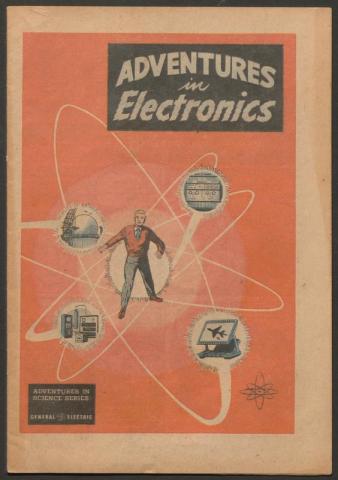
On this date in 1906, inventor and electronics pioneer Lee DeForest (1873 - 1961) appeared before the American Institute of Electrical Engineers to announce that he had completed development of his "Audion" triode, or three-element electrical vacuum tube. The invention would later be patented on January 15, 1907
The device was created by placing a wire mesh between the filament and collector plate of a diode tube (an invention contributed by J. Ambrose Fleming in 1904). This mesh increased the voltage produced by the diode tube, enabling its user to amplify weak radio signals. This was a crucial step in making long-distance radio broadcasts and telecomunnications possible.
In recognition of the contributions of the vacuum tube to radio, electronics, and telecommunications history, we're sharing this cover of the 1955 comic book Adventures in Electronics, which elaborates on how vacuum tubes and other components made radio communication and other electronic devices possible. The work was created by Pictorial Media, Inc. on commission from the General Electric Company as part of the company's 'Adventures in Science' series.
This comic book is call number Pam 2017.0836 in Hagley Library's collection of pamphlets and trade catalogs. It has been digitized in full along with a selection of some of the promotional comic books held by the Hagley Library. These works were generally, though not always, produced by corporations and other business entities for the purposes of advertising a product, managing a company's public image, or providing consumer education.
A number of these works were also produced with the goal of influencing public opinion regarding socioeconomic political issues such as organized labor and government regulation of businesses. This digital collection does not include all the Hagley's holdings of promotional comic books. New items may be added periodically.
Click here to view this digital collection online now.

